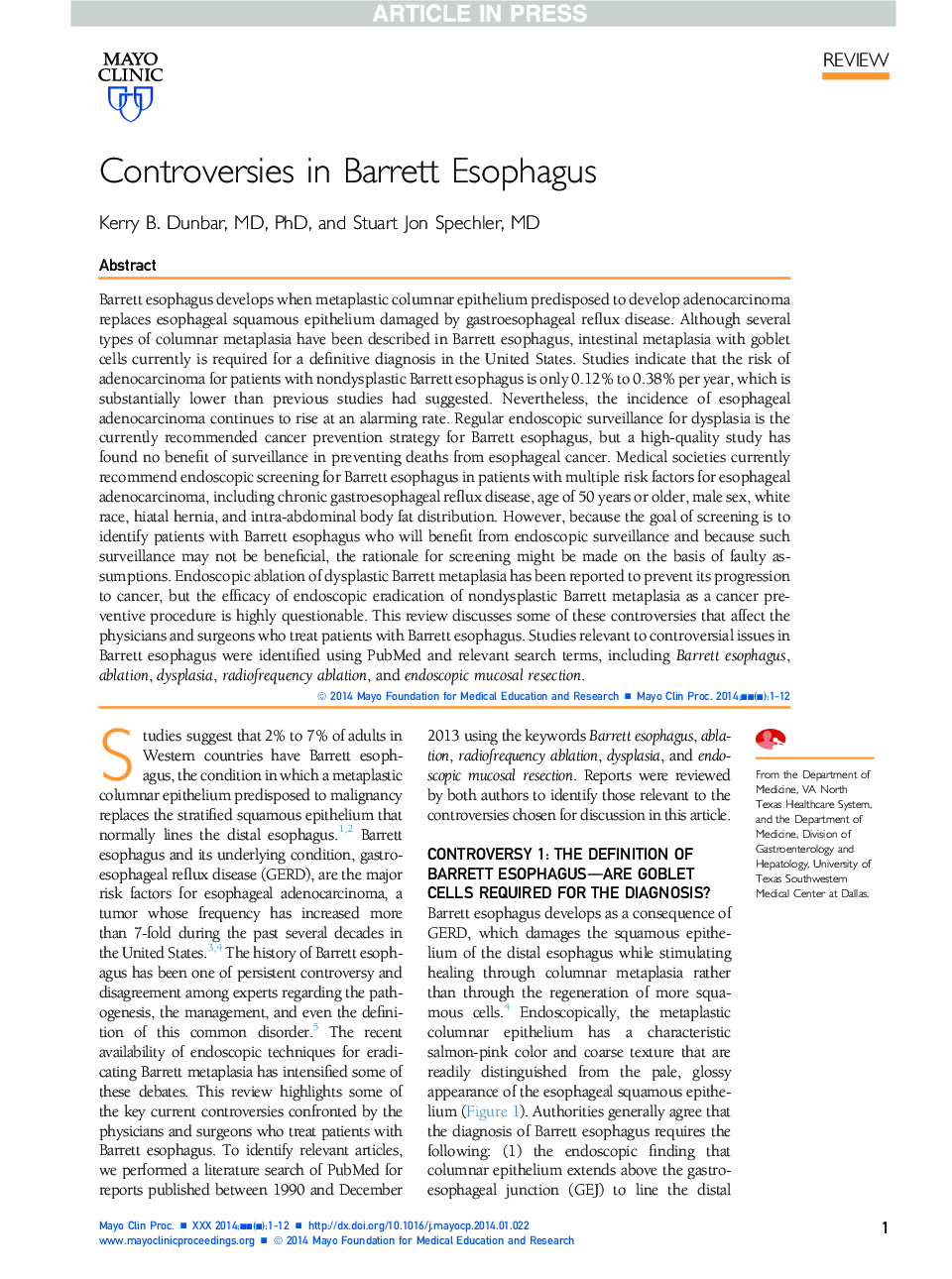| کد مقاله | کد نشریه | سال انتشار | مقاله انگلیسی | نسخه تمام متن |
|---|---|---|---|---|
| 2998642 | 1180254 | 2014 | 12 صفحه PDF | دانلود رایگان |
عنوان انگلیسی مقاله ISI
Controversies in Barrett Esophagus
دانلود مقاله + سفارش ترجمه
دانلود مقاله ISI انگلیسی
رایگان برای ایرانیان
کلمات کلیدی
PDTACPEMRaCgAGAAmerican Society of Gastrointestinal EndoscopyRFAGERDSSIMASGEGastroesophageal junction - اتصال مفاصل معدهAmerican Gastroenterological Association - انجمن گوارش آمریکاEMR, endoscopic mucosal resection - برداشتن مخاط آندوسکوپیgastroesophageal reflux disease - بیماری ریفلاکس معده به مریGEJ - جی جیradiofrequency ablation - حذف با بسامد رادیوییPhotodynamic therapy - درمان فتودینامیکsubsquamous intestinal metaplasia - متاپلازی روده زیرکیومAmerican College of Gastroenterology - کالج آمریکایی گوارشAmerican College of Physicians - کالج پزشکان آمریکایی
موضوعات مرتبط
علوم پزشکی و سلامت
پزشکی و دندانپزشکی
کاردیولوژی و پزشکی قلب و عروق
پیش نمایش صفحه اول مقاله

چکیده انگلیسی
Barrett esophagus develops when metaplastic columnar epithelium predisposed to develop adenocarcinoma replaces esophageal squamous epithelium damaged by gastroesophageal reflux disease. Although several types of columnar metaplasia have been described in Barrett esophagus, intestinal metaplasia with goblet cells currently is required for a definitive diagnosis in the United States. Studies indicate that the risk of adenocarcinoma for patients with nondysplastic Barrett esophagus is only 0.12% to 0.38% per year, which is substantially lower than previous studies had suggested. Nevertheless, the incidence of esophageal adenocarcinoma continues to rise at an alarming rate. Regular endoscopic surveillance for dysplasia is the currently recommended cancer prevention strategy for Barrett esophagus, but a high-quality study has found no benefit of surveillance in preventing deaths from esophageal cancer. Medical societies currently recommend endoscopic screening for Barrett esophagus in patients with multiple risk factors for esophageal adenocarcinoma, including chronic gastroesophageal reflux disease, age of 50 years or older, male sex, white race, hiatal hernia, and intra-abdominal body fat distribution. However, because the goal of screening is to identify patients with Barrett esophagus who will benefit from endoscopic surveillance and because such surveillance may not be beneficial, the rationale for screening might be made on the basis of faulty assumptions. Endoscopic ablation of dysplastic Barrett metaplasia has been reported to prevent its progression to cancer, but the efficacy of endoscopic eradication of nondysplastic Barrett metaplasia as a cancer preventive procedure is highly questionable. This review discusses some of these controversies that affect the physicians and surgeons who treat patients with Barrett esophagus. Studies relevant to controversial issues in Barrett esophagus were identified using PubMed and relevant search terms, including Barrett esophagus, ablation, dysplasia, radiofrequency ablation, and endoscopic mucosal resection.
ناشر
Database: Elsevier - ScienceDirect (ساینس دایرکت)
Journal: Mayo Clinic Proceedings - Volume 89, Issue 7, July 2014, Pages 973-984
Journal: Mayo Clinic Proceedings - Volume 89, Issue 7, July 2014, Pages 973-984
نویسندگان
Kerry B. MD, PhD, Stuart Jon MD,